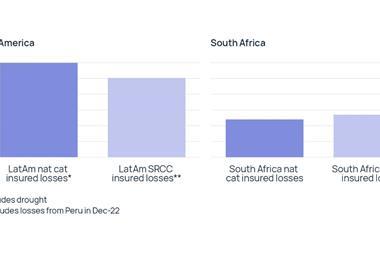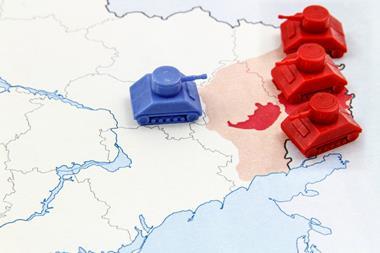The last quarter saw more countries witness an increase in risks from civil unrest than at any time since Maplecroft’s Index was released
The world is facing an unprecedented rise in civil unrest as governments of all stripes grapple with the impacts of inflation on the price of staple foods and energy, according to the latest edition of Maplecroft’s Civil Unrest Index (CUI).
The data, covering seven years, shows that the last quarter saw more countries witness an increase in risks from civil unrest than at any time since the Index was released.
Out of 198 countries, 101 saw an increase in risk, compared with only 42 where the risk decreased.
The impact is evident across the globe, with popular discontent over rising living costs emerging on the streets of developed and emerging markets alike, stretching from the EU, Sri Lanka and Peru to Kenya, Ecuador and Iran.
Europe also stands out negatively, in large part due to the fallout from Russia’s invasion of Ukraine. Bosnia and Herzegovina, Switzerland, Netherlands, Germany, and Ukraine are all among the states with the biggest projected increases in risk.
As the conditions for civil unrest build in a growing number of countries, the severity and frequency of protests and labour activism is set to accelerate further over the coming months.
Brace for anti-government protests
Although there have been several high-profile and large-scale protests during the first half of 2022, the worst is undoubtedly yet to come.
With more than 80% of countries around the world seeing inflation above 6%, socioeconomic risks are reaching critical levels. Almost half of all the countries on the CUI are now categorised as high- or extreme-risk, and a large number of states are expected to experience a further deterioration over the next six months.
Unsurprisingly, Sri Lanka experienced the biggest decrease in government stability as protests driven by deteriorating socioeconomic conditions forced the resignation of President Gotabaya Rajapaksa in July.
Meanwhile, middle-income countries that were rich enough to offer social protection during the COVID-19 pandemic, but are struggling to maintain high levels of social spending during 2022, are likely to face the highest risk.
It is unsurprising, therefore, that eight out of the 10 largest projected increases in risk fall into this category: Bolivia, Egypt, Philippines, Suriname, Serbia, Georgia, Zimbabwe, and Bosnia and Herzegovina.
For governments unable to spend their way out of the crisis, repression is likely to be the main response to anti-government protests.
But suppression comes with its own risks, leaving disgruntled populations with fewer mechanisms for channeling their dissent at a time of growing frustration with the status-quo.
In countries where there are few effective mechanisms for channeling popular discontent, such as a free media, functioning unions and independent courts, the threshold for populations to take to the streets is likely to come down.
More downside than upside
Only a significant reduction in global food and energy prices can arrest the negative global trend in civil unrest risk. Recession fears are mounting and inflation is expected to be worse in 2023 than in 2022.
Weather will be another crucial factor. A cold autumn and winter in Europe would worsen an already serious energy and cost of living crisis.
Similarly, an increase in droughts and water stress globally would worsen already high food prices and spark localised protests in affected areas.
The most explosive civil unrest is likely to occur where avenues for dissent are narrowing and where the ability to shield populations from the rise in living costs are limited.
Crucially, this is also where investors are likely to rush for the exit first, leaving the most vulnerable governments even less equipped to take measures to reduce the risk of civil unrest.
Although socioeconomic pressure has already given rise to protests across the world, the next six months are likely to be even more disruptive.
Putin exposed as Ukrainian forces recapture more territory
- 1
- 2
- 3
- 4
- 5
- 6
- 7
- 8
 Currently reading
Currently readingInflation fuels social unrest, with the worst to come
- 9
- 10
- 11
- 12
- 13
- 14
- 15
- 16
- 17
- 18
- 19






































No comments yet